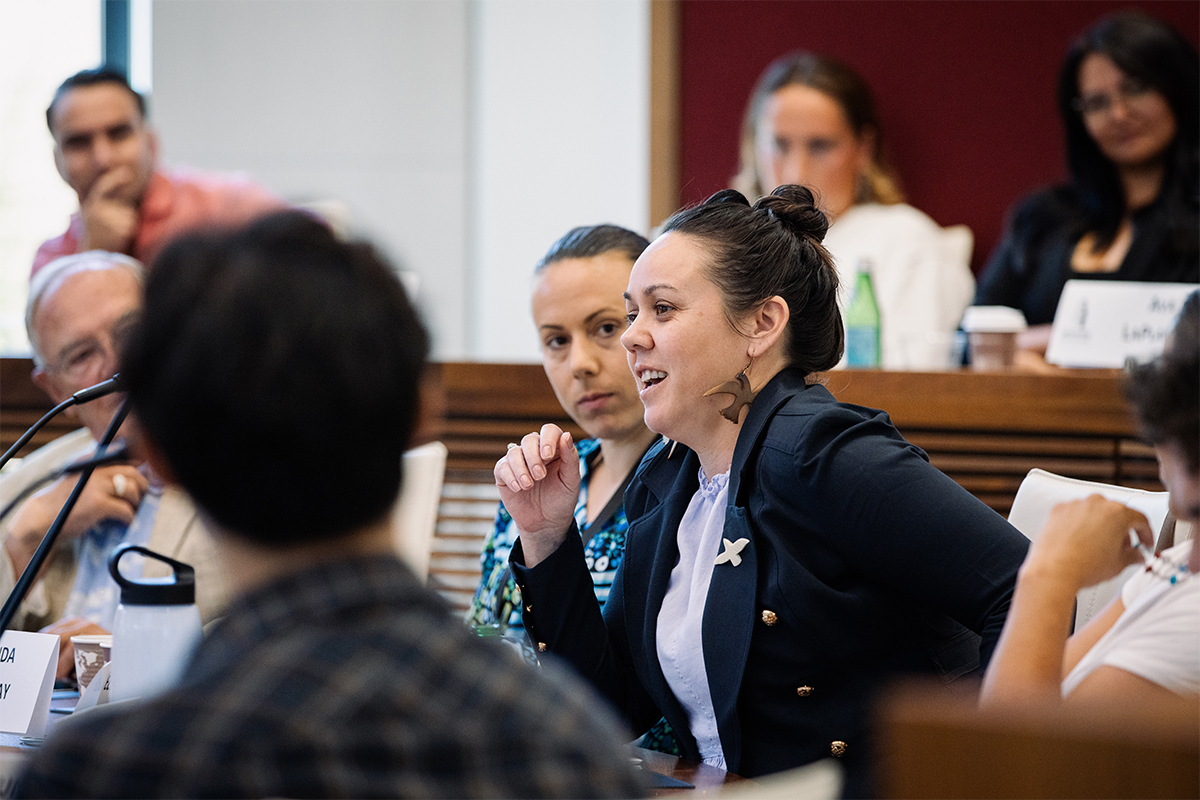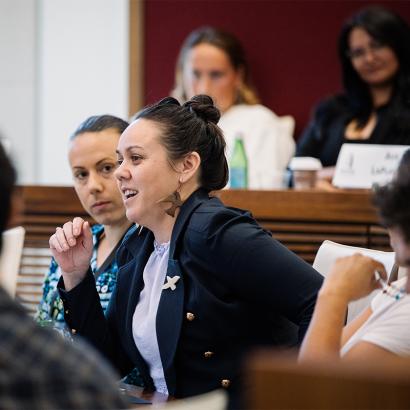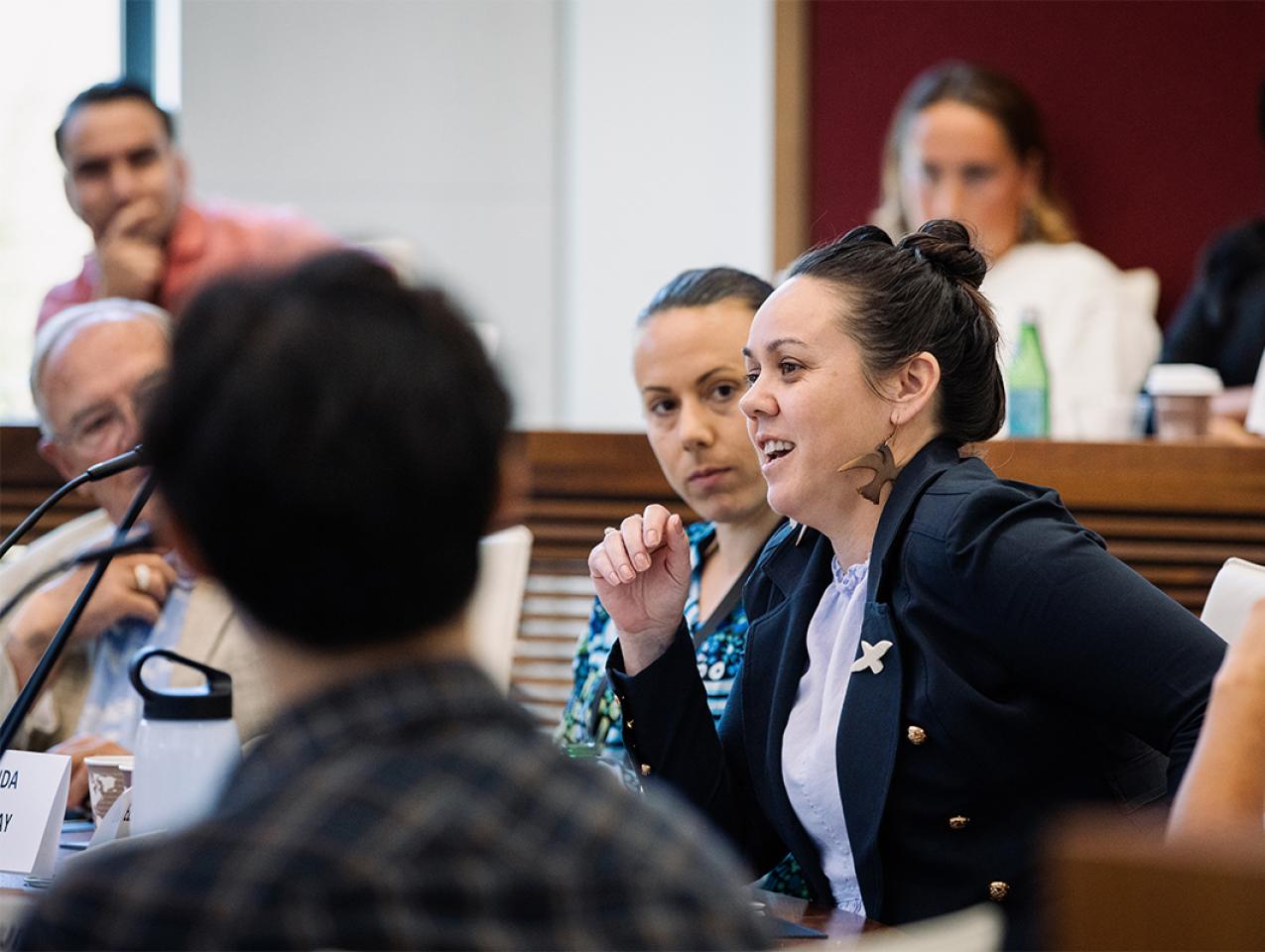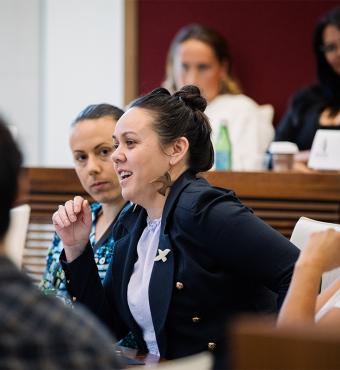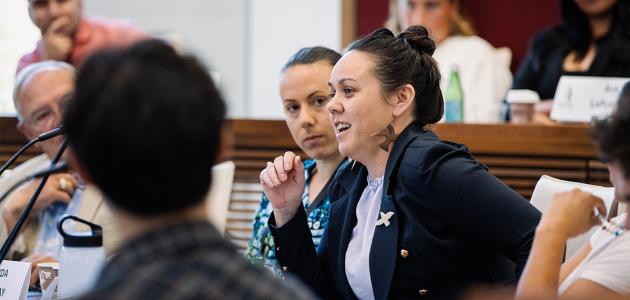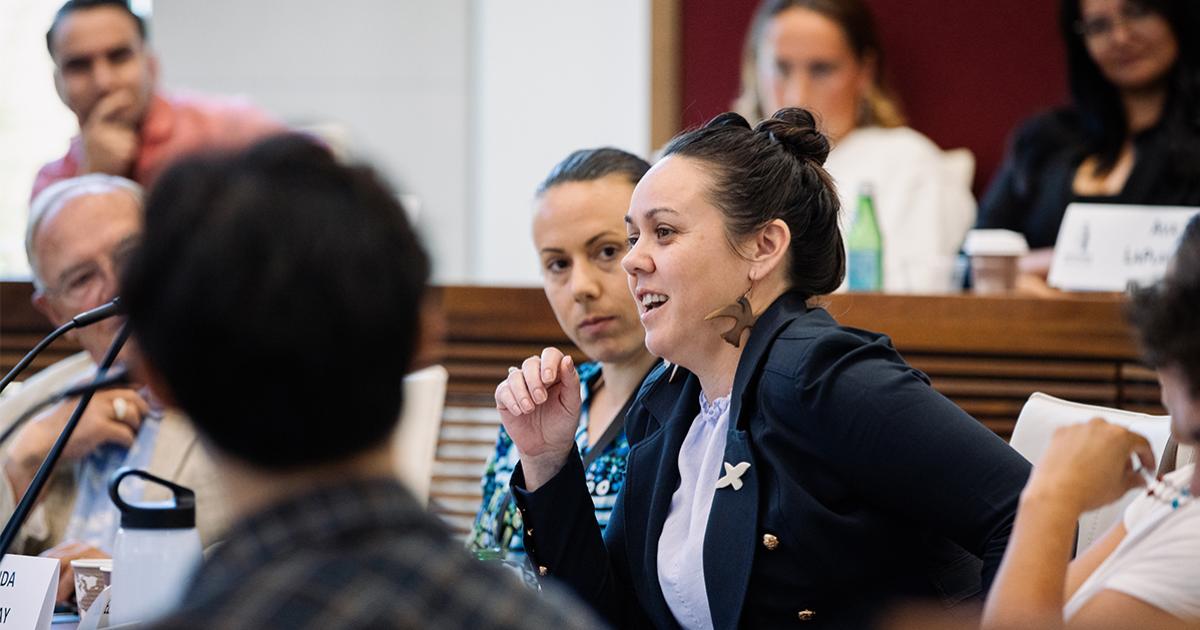Hoover Institution (Stanford, CA) — Indigenous students and young professionals hoping to foster robust economic activity in their local communities gathered for the Indigenous Student Seminar at the Hoover Institution from August 5 to 9, 2024.
The fifth annual weeklong gathering brought together students and recent graduates from the United States, Canada, New Zealand, and Australia to reinvigorate the entrepreneurial spirit demonstrated by Indigenous peoples for millennia, propel regulatory changes to help Indigenous groups chart their own economic paths, and discuss the seemingly endless array of colonial barriers to development.
The seminar is part of the Renewing Indigenous Economies Project at the Hoover Institution, directed by Hoover senior fellows Terry Anderson and Dominic Parker, and administered and moderated by Gonzaga University professor of entrepreneurship Daniel Stewart.
Attendees offered a multitude of reasons for attending the seminar. Some plan to enter academia and embark on deeper research into Indigenous issues. Others want to take ideas discussed in the seminar back to their home tribes, some of whom are deciding how to develop natural resources on their lands.
But before entertaining ideas to help Indigenous nations thrive in the twenty-first century, one must venture to understand the impact of colonialism over previous centuries.
Jurisdictional Gray Zones
Renewing Indigenous Economies Project cochair Dominic Parker spoke of how centuries of federal policy, in which Indigenous people were kept from owning their own land and pushed onto reservations with byzantine legal regimes, amounted to what has been referred to as “white tape,” or a barrier to economic development.
In contrast to internally developed rules and norms that encouraged trade across tribes and with Europeans prior to colonization, Parker said, “federal rules today suppress the abilities of tribes to do business with outside parties.”
Parker and other speakers pointed out that legal structures on American Indian reservations are often complicated, with no clear jurisdiction over civil matters such as enforcing contracts and burdensome federal regulations.
Adam Crepelle, assistant professor at the Loyola School of Law, built on that same theme by walking participants through legal decisions in the eighteenth and nineteenth centuries that not only dispossessed Indigenous peoples but also contributed to the convoluted system of tribal governance on their remaining lands.
Prior to contact with settlers, Crepelle explained, Indigenous tribes engaged in trade across what is now Mexico, the United States, and Canada. And they also had legal frameworks in which they could exercise property rights, forge contracts, trade securities, charge interest on loans, and seek mitigation for damages or injury.
But US courts during the 1800s systematically stripped Indigenous people of their rights. In one case Crepelle cited, Johnson v. McIntosh (1823), the US Supreme Court ruled that Native Americans did not own any land in the United States, they only had “a right of occupancy.”
“And if you don’t own the land, there’s nothing to steal,” Crepelle said.
Efforts to keep Indigenous people from having title over land extended into efforts to limit their jurisdiction over crimes committed on reservations and also complicated matters related to their ability to make investments and establish businesses.
The jurisdictional grey zone on tribal land can get in the way of even the most basic of economic functions: extending credit. Longtime Navajo banker and community leader Derrick Watchman told attendees of the challenge of extending credit on a reservation.
Whether the borrower was a business or a public entity, Watchman said, a loan could be issued only through the approval from the local tribal council. There is likely no other situation in America where a private entity requires the consent of a local elected body before securing credit, and naturally this requirement has hampered issuance of credit on reservations.
Who Gets to Call Themselves Indigenous in America?
While simplifying legal frameworks on tribal land can help drive investment and growth on reservations, the basic question of who gets to call themselves Indigenous in America looms over all the other challenges Native Americans face.
C. Matthew Snipp, professor of humanities and sociology at Stanford University, spoke to the students about the lasting negative impact of the federal government using “blood quantum” as a means of determining Native American lineage.
Snipp estimates that the number of American residents who qualify as Indian using blood quantum will start to decline sometime around 2040, and will continue to fall through the rest of the twenty-first century, while the number of American residents with some Indian lineage but less than the one-fourth required by federally-imposed blood quantum rules will nearly quadruple.
“[Imposing blood quantum on Native tribes] will succeed where US Army failed in wiping out American Indians,” he said.
The suggestion posed by some to end this trend is to let Indigenous people self-identify or self-qualify for status, but that comes with its own risks.
There are emerging fears among Indigenous groups across North America that people able to self-identify as Native, without any actual proof of lineage (so-called “pretend-ians”) might take up space and benefits from legitimate Indigenous people.
Snipp argued that the entire idea of blood quantum is flawed and ties the choices they make in life to how the federal government will view them as people. He said the blood quantum system discourages interracial marriage and preoccupies some tribes with issues of lineage in a way that concerns no other Americans in order to have a distinct identity.
“The federal government has a relationship with Native people that is similar to that of the American Kennel Club and championship puppies,” he said.
He also told attendees it is getting progressively more difficult to access complete data on Native American populations in the United States, as federal agencies increasingly refuse to release it.
Revitalizing Governing Institutions in Indigenous Lands
Other presenters offered findings on how tightening legal frameworks and improving governance on tribal territory can generate better economic outcomes for Indigenous people.
Thomas Stratmann, a distinguished university professor at George Mason University, presented research that found even small but sustained improvements could be associated with higher resident incomes, including the formalization of tribal criminal courts and open access of public data on reservations.
There were also presentations about how Canada is slowly letting its First Nations plot their own economic course, with positive results.
Donn Feir, professor of economics at the University of Victoria, showed attendees how changes to Canadian federal legislation have enabled Indigenous communities in that country to levy their own taxes and reduce their internal regulatory burden. In some instances, these policies resulted in reserves (reservations) becoming a more attractive investment destination than the municipalities surrounding them.
Leveraging these laws, First Nations of Canada have purchased land in urban areas to create at least 120 “urban reserves” in Canadian cities. Several First Nations have gone on to become major off-reserve real estate developers.
Playing Games
André Le Dressay, director of Canada’s Tulo Centre of Indigenous Economics, took the lessons from Canada one step further, with an interactive online game all attendees could play.
The game directed participants to choose targeted economic measures for their tribe to implement and then ran those choices against common scenarios, such as the sudden resignation of the tribe’s chief or, even more topical, the rapid onset of a global pandemic.
The game assigned scores to how well the economic measures they chose held up against different adverse scenarios. The trio of participants with the highest score went home with Tulo Centre toques (a Canadian name for woolen winter cap).
“The Network Effect”
Several speakers stressed the importance of not only encouraging entrepreneurship on tribal lands but also increasing the number of Indigenous academics concerned with matters of economics and business.
Daniel Stewart spoke of “the network effect” of more and more students and scholars discussing the economic revitalization of American Indian tribes, publishing fresh research, and initiating new efforts to establish property rights and a more business-oriented focus in Indian Country,
“We’re all going to be more effective if there are more of us doing this,” he said.
Going around the table, attendees and lecturers each expressed gratitude for the existence of the Indigenous Student Seminar, in which they could discuss a new path forward for Indigenous people to increase their autonomy, resilience, and economic self-sufficiency.
Stewart said he viewed the discussions through the week around economic development for Indigenous people as a way for them to move past the sorrows of previous centuries.
“I view us as a book that’s been partially written, and we’re coming off the sad chapters, and now we’re going to write the happy chapters, and you’re going to help us write those chapters.”







